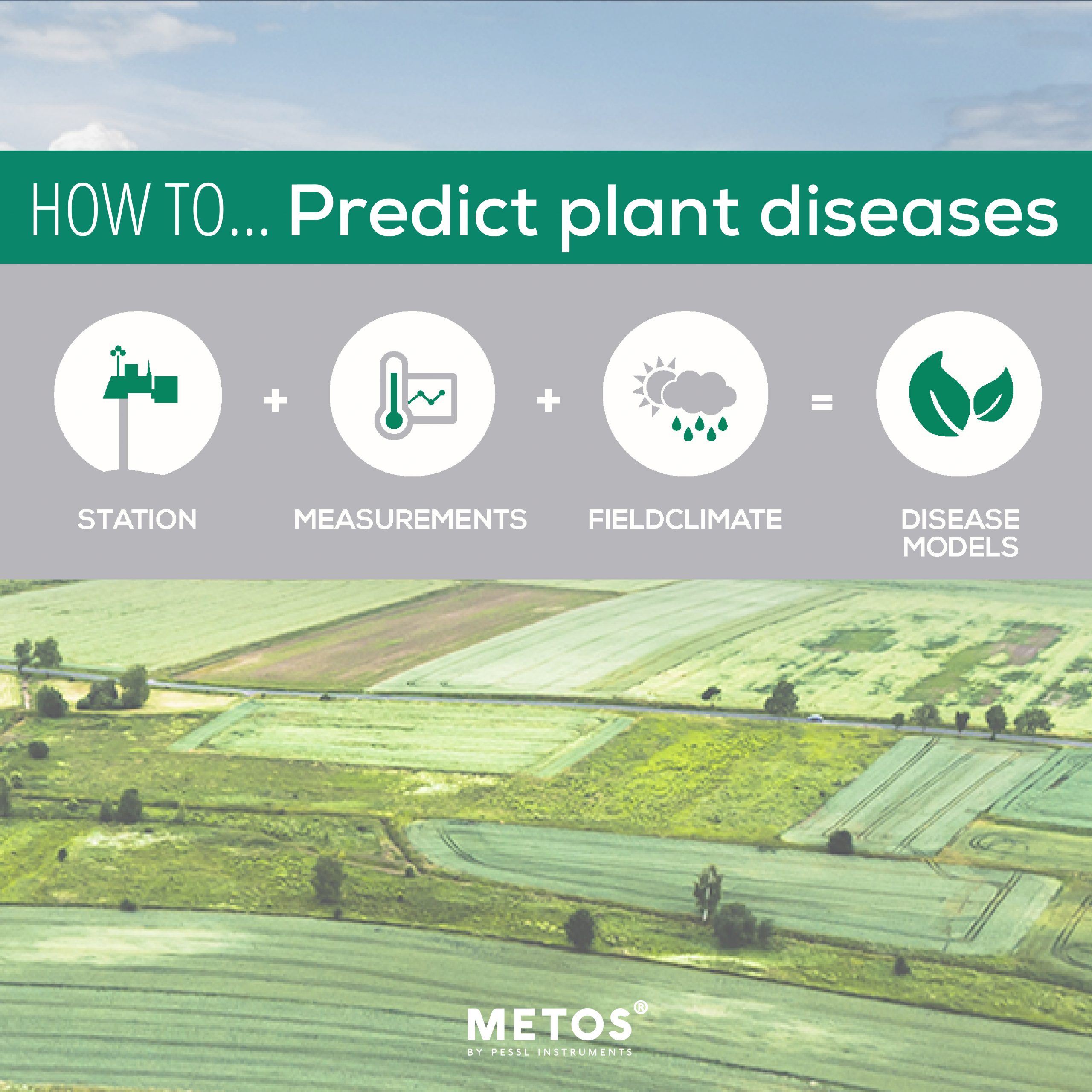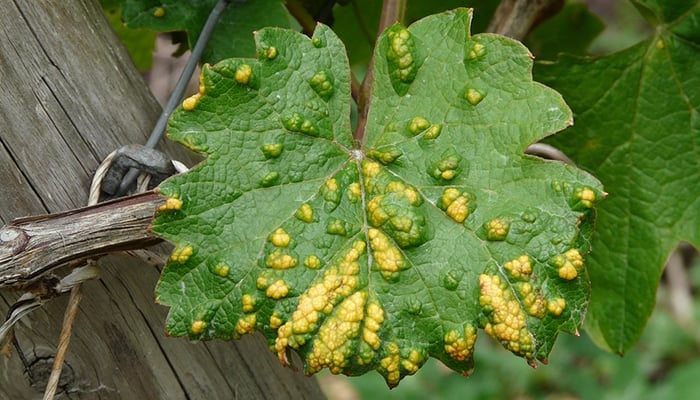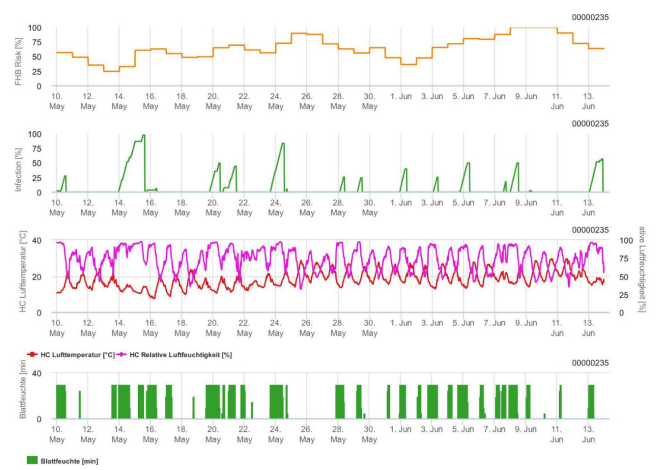Sustainable plant disease protection strategies to keep your crops healthy
How to predict plant diseases
Over the last few years, the impact of climate change has increased rapidly. It is influencing all steps of plant production and forcing farmers to change and adapt their behaviours. They must search for new management strategies to make their farming approaches both ecological and economical, with a focus on ROI (return on investment).

Having in mind the complex interactions between the plant, soil and environment, the prediction of plant disease outbreaks and optimal timing of fungicide applications is essential.
It is not a small task that detailed consideration must be paid to protecting plants against diseases. With a well-thought-out approach, farmers can increase crop productivity with less environmental impact while maintaining food quality.
WHEN DOES A FUNGAL DISEASE OCCUR
Three factors have to come together: The fungal pathogen has to come in contact with a susceptible host plant under favourable environmental conditions.
This event is summarized in the disease triangle; all three must be present at the same time for the disease to occur.
PLANT DISEASE SEVERITY
Disease severity is influenced by:
- the plant variety (some hybrids are more sensitive than others)
- the inoculum/number of infective spores (crop rotation)
- the environmental conditions (e.g.: heavily rain distributes spores on a broader area, long-lasting leaf wetness time)
- crop management (overwintering on crop residues, tillage)
The main factor for the successful infection of the fungal pathogen is the weather conditions. Humidity in the form of rain, high relative humidity, leaf wetness, dew or fog favour the disease and higher temperatures within these wet periods speed up the infection process.
DISEASE MONITORING
Weather stations, equipped with sensors for rain, relative humidity, leaf wetness, solar radiation, soil parameters and temperature, determine risky periods for an infection in the field on an hourly basis. With this knowledge, fungicide applications can be optimally timed.
For example, the outbreak of Fusarium Head Blight is influenced by the history of the field (number of spores available) and by the climate situation during fluorescence. It will not occur if the climate is not favourable during bloom. But if there are optimal conditions for infection during bloom the flower will be infested and the disease leads to “deaf ears”, deformed grains and a concentration of mycotoxins in the crop.
GRAPHICAL PRESENTATION OF DISEASE MODEL
We are showing a general risk model (yellow) and an infection model (green), pointing out the date (hourly intervals) of infections in the field. Depending on the plant protection strategy an action has to be taken into account. At a risk above 60% to 70%, we must act preventative and at 100% we must use curative measurements.
Detailed information about the biology of the pathogen, the model, used for determination of the risk and recommendations are found online.
Further, we are also collaborating with leading developers and have established seamless interfaces to third-party decision support systems as well (i.e. RIM-PRO, HORTA, ProPlant, Welte, Dacom etc.).
RECOMMENDED SOLUTIONS FOR DISEASE MONITORING
A wide range of hardware solutions under METOS brand provides efficient and cost-effective environmental measurements. All the measured values can be combined with the site-specific weather forecasts and are accessible in near real-time on the FieldClimate platform and include a number of variables – quantity and probability of precipitation, temperature, relative humidity, and more.
We recommend one of the following:
1. The iMETOS IMT200 includes Air Temperature and Relative Humidity sensor, a Rain Gauge and a Leaf Wetness sensor.
2. The iMETOS IMT300 comes with all the sensors for Evapotranspiration and Disease Models calculation: Air Temperature and Relative Humidity sensor, Rain Gauge, Global Radiation, Wind Speed and Leaf Wetness sensor.
3. Adjust your iMETOS and µMETOS stations to your needs by simply adding additional sensors.
ADVANTAGES AND BENEFITS OF METOS
- Save time and money using online monitoring solutions.
- Start the work only under the proper conditions.
- Give your crops the possibility to grow in the best possible conditions.
- Monitoring to adapt tech sheet to the climatic changes.
- Weather forecast to make the right decision at the right time.
- Work planning tools to optimize your production.
- Information on sowing window.
- Information on tillage ability.
Not sure which solution is best for you? We understand it can be sometimes difficult to choose the correct solution for your troubles. In case you would like to have more information or need advice, please contact our marketing team.



